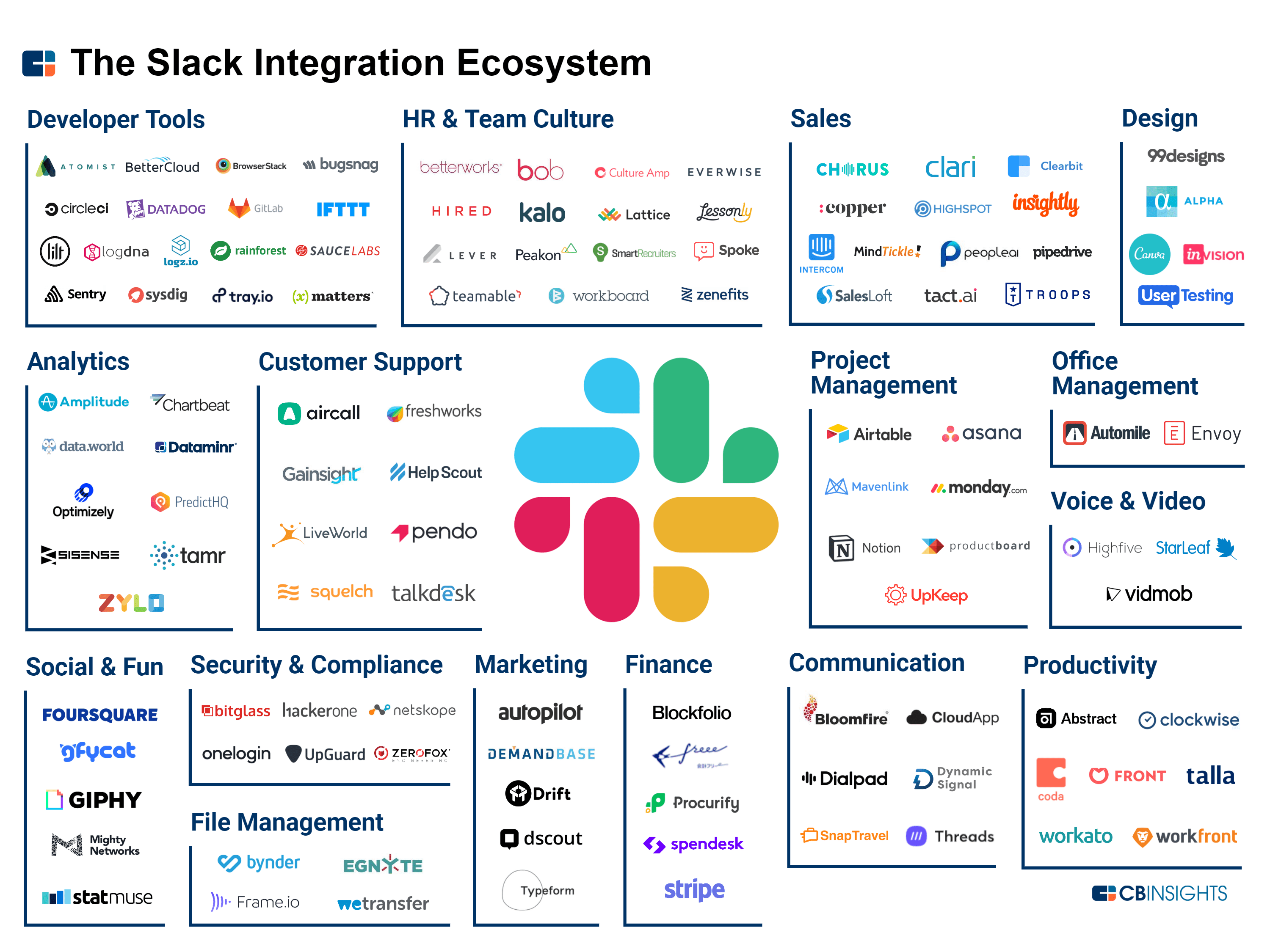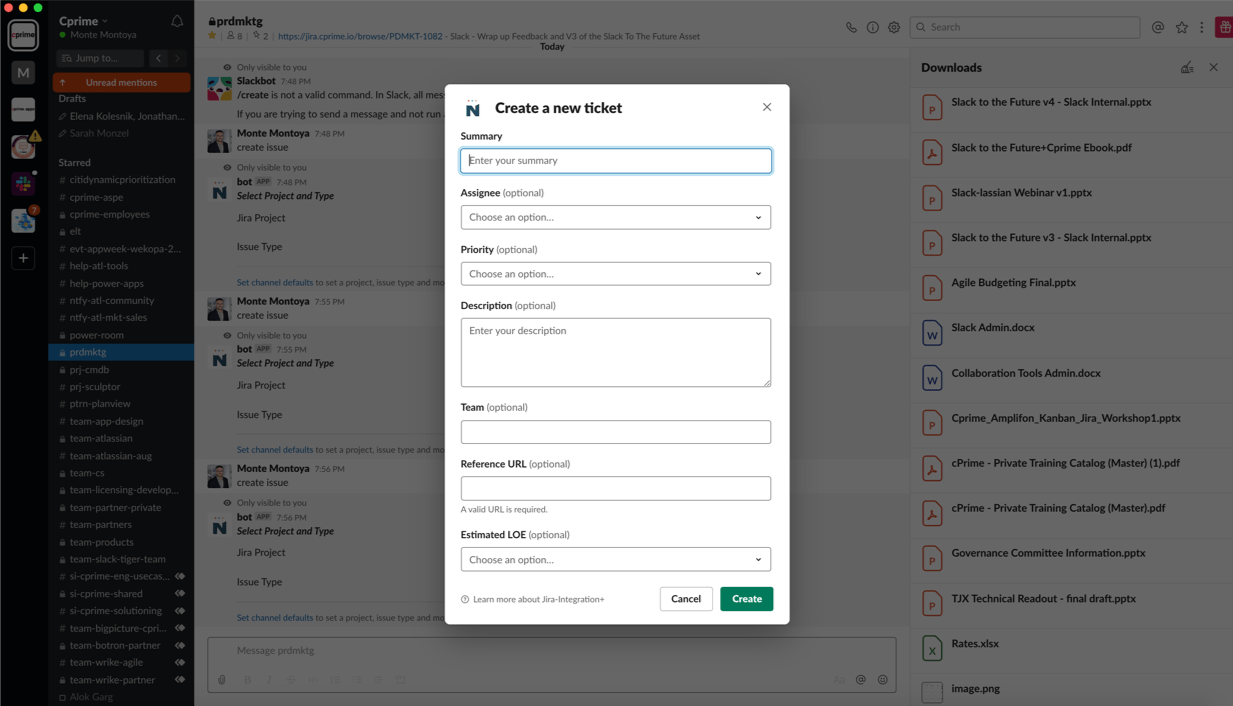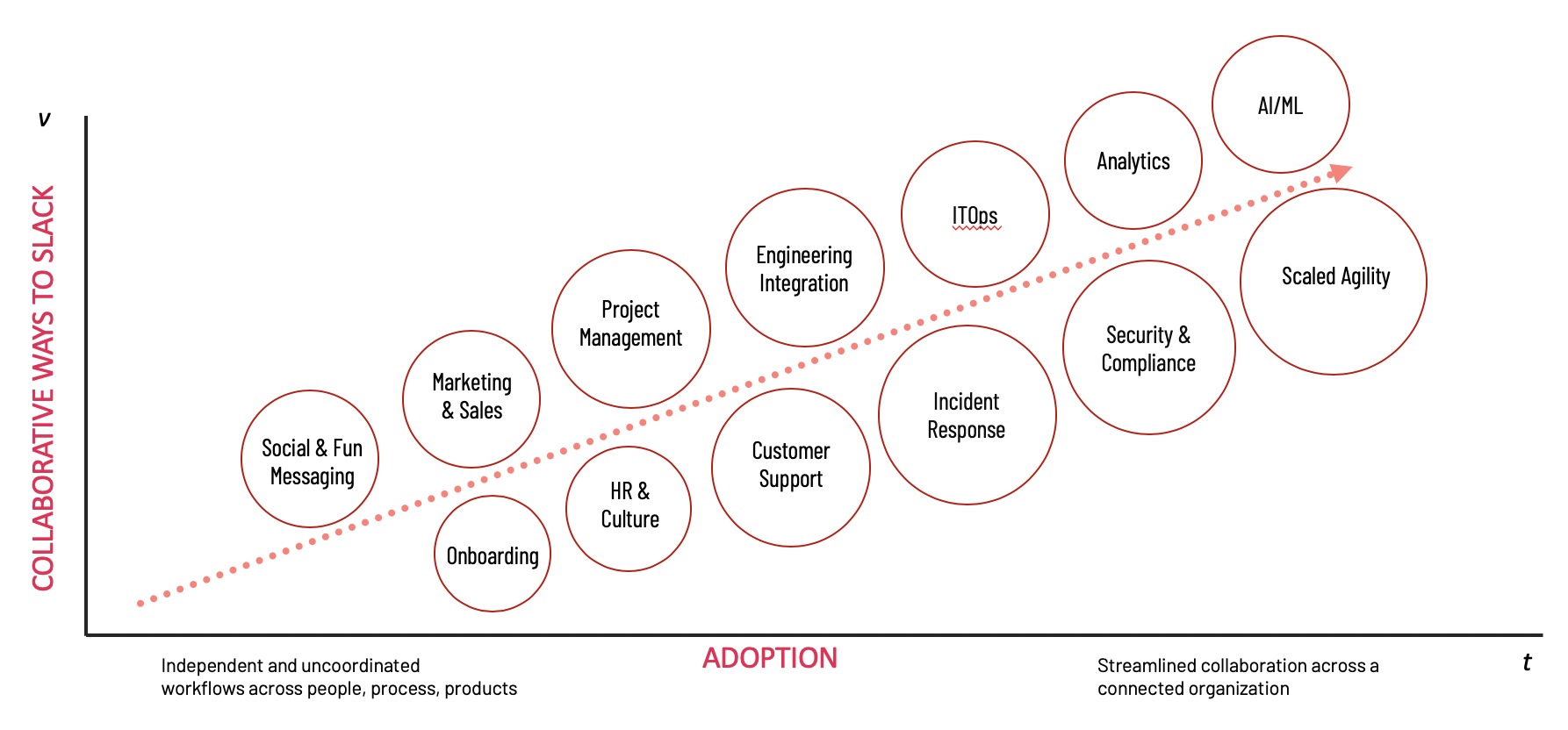How to Turn Slack Into Your Enterprise Collaboration Hub and Why You Should
It’s highly unlikely you’ve never heard of Slack. That’s not a blanket generalization, it’s a statistical fact:
- Over 12 million people use Slack daily who spend an average of 90 minutes in the app every day
- Customers include 65 of the Fortune 100 (the largest, most influential companies in the world)
- The company is routinely in the news because of its explosive growth: the latest earnings report revealed a 60% year-over-year growth rate.
So, not only have you probably heard of this popular messaging and collaboration app, there’s a good chance you use it yourself. But, the question you may be asking is, “is all the hype really justified?” Is Slack really that big of a deal, or is it just the current flavor of the month?
We believe the answer is a resounding YES. Slack IS an incredibly powerful app that’s earning its rapidly growing place within the daily workflows and thousands of organizations. In fact, after years of experimentation and development, we’ve come to the conclusion that Slack — expertly configured and deployed — can serve as a matchless Collaboration Hub that can scale effectively from small businesses to the largest enterprises. We’ve even built an offering around that concept because we know it can help our current and future customers in innumerable ways.
But, let’s take a step back and answer some of the additional questions that are running through your mind right now:
- How can an instant messaging app wield that much power?
- What about all the other collaboration tools and other software I’m already using?
- How good could a Slack-based workflow really be?
Your answers are below.
Isn’t Slack Just About Communication?
The key to Slack’s huge potential is that it’s not just a messaging app.
Without a doubt, its core messaging functionality is what put Slack on the map because it’s a really high quality messaging platform. And, its freemium model has always ensured that millions more users use Slack for free than pay for it, and most of those users use Slack’s messaging functionality almost exclusively. However, Slack is so much more than that.
The real power of Slack is in its integrations
From the beginning, Slack has allowed 3rd party developers to create add-ons and integrations with their platform. More than that, they’ve actively encouraged this through education and even financial support.
The result is a thriving ecosystem of nearly 2,000 integrations that seamlessly connect Slack to seemingly every other software tool their customers rely on every day. Other apps expand on Slack’s core functionality with powerful automation, organization, and workflow tools. And, if you don’t happen to locate the exact tool or integration you need to round out your custom system, there are thousands of developers available you can call on to create whatever you need.
How Slack’s integrations can change your workday
So, just think for a moment about all the different tools you use throughout the workday. Here’s a list of examples:
- Office 365 (Word, Excel, Outlook, etc.)
- G-suite (Google Docs, Calendar, Gmail, etc.)
- Salesforce
- Jira
- InVision
- Mavenlink
- Slack (used just as a messaging app)
How much time do you think you spend hopping back and forth between these tools? Checking emails, updating tickets, commenting on shared documents, logging time… each in a different tool which you need to locate, log into, and navigate, often several times a day. All of it’s important, but little or none of it encompasses the actual work you’re getting paid to do.
That’s what we call “the work of work.” It’s all the support activities you have to keep up with so you can do your best work as quickly and efficiently as possible. But, with the conglomeration of tools most companies sew together over time — some of which talk to each other, most of which do not — the work of work can eat up so much of the workday, it starts to defeat its purpose.
In addition, these Franken-systems end up creating information silos resulting in duplicated efforts and important things falling through the cracks. So, the overall cost of not having a centralized hub that ties all the tools together is quite high.
Fortunately, Slack can be that centralized hub.
Hypothetical Case Study: Slack + Atlassian = Business Agility
To illustrate how Slack can fill that central role, let’s imagine a mid-size software company. They’re working with the following impressively small tech stack:
- Jira / Jira Service Desk – Project management and Help Desk
- Confluence – Knowledge base and documentation
- Google Docs / Gmail / Calendar – Internal and external document collaboration, email communication, and scheduling
- Bitbucket – Code collaboration
- InVision – Frontend design
- Trello – Task management
Like many of their competitors, they’ve just signed on for a premium Slack membership after having used the free version for a few months. Thus far, everyone has sent a message, joined a channel, and shared a GIF. But now, a whole world of unlimited integrations and tools is at their fingertips.
What can they do? And, what benefits can they experience?
Real-time collaboration
They already know Slack is a great messaging service. It’s not just fast, scalable, and easy to use. It’s fun. People like interacting through the Slack interface, and that’s probably already enhanced collaboration.
But now, with all their tools integrated, other collaborative opportunities present themselves:
- Commenting on Jira tickets, Confluence pages, Google Docs, and more
- Receiving notifications from Jira, Confluence, Trello, Gmail and more
- Bringing relevant information from emails, documentation, InVision prototypes, and more directly into an ongoing chat or direct message
- Embedding numerous types of rich content into ongoing conversations for context and illustration
- Updating Jira ticket status, sharing Google Docs, creating Trello cards, and more
And, all of this happens right within Slack, without having to move around to different tabs or screens. As a result, everyone in the organization finds nearly an hour of their day returned to them, simply because they’re no longer constantly switching between applications.
Bridging people, process, and technology
Beyond the actual time savings that comes with working in one app, the team notices a very real improvement in productivity, creativity, and quality of work. This can be traced to reducing the constant interruption of thought and flow that accompanies switching between apps. When the “work of work” happens almost exclusively in one spot, that’s the only thing they need to worry about outside of whatever tools they use to do their actual job. That means minimized interruption from notifications — a feature that’s highly customizable inside Slack — and longer, more effective periods of deep work.
Additionally, all the integrated tools are both cloud-based and accessible from Slack’s powerful mobile app, further adapting the existing workflows to how the modern worker functions best. So, a highly integrated toolset based around Slack as the Collaborative Hub effectively bridges people with the technology they need to be productive.
Slack also supports impressive features for formalizing process and governance.
Workflows is a native Slack feature that offers powerful automation for repeatable processes. Rather than reinventing the wheel each time a repetitive task needs to be done, they can set up an automated workflow and let Slack handle it for them.
Deep integration with Confluence means anything that happens in Slack can be recorded as needed in the permanent knowledge base or in meeting notes. Similarly, documented information from Confluence can be surfaced within a Slack conversation to add context or aid in quick decision making. And, when decisions are made, they’re always part of the permanent record.
Where Slack and agile meet
Based on all of the above, it won’t surprise you to learn that Slack works exceptionally well as a foundation for agile practices. All of the following aspects of business agility can be managed in whole or in part within Slack:
- Task management
- Search queries
- Reports and metrics
- Agile Process reports (burndown, sprints, etc.)
- Agile ceremony management
- Issue analysis
- Forecast and management reports
- Agile event-based insights
- Governance and standardization
We’ve also found that establishing a Slack-based Collaboration Hub beforehand can dramatically improve the speed and ease of an agile transformation. That’s where our expertise lies: helping organizations make the best use of tools like Slack to achieve business agility and strategic objectives.
To dive much deeper into setting up Slack as a modern Collaboration Hub, download the free ebook, Slack to the Future: How to Get the Most From Your Tech Stack.






